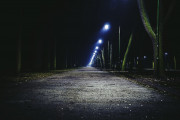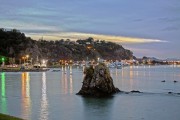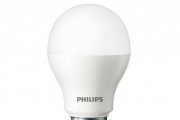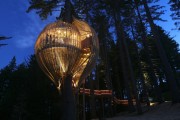 2019-03-27
2019-03-27
Australia and New Zealand are increasing their investment in smart city applications with more LED streetlights conversion projects going on in different cities.
(Image: Pixabay)
Telensa, the UK-based smart city and street lighting specialist, announced the partnership with City of Darwin in Australia. The company will provide its PLANet intelligent street lighting system and replace about 10,000 street and public lights with wirelessly connected LEDs. These streetlights will then be controlled by the Telensa Central Management System (CMS) and hos...
Continue reading →
 2018-03-27
2018-03-27
Telensa, specializing in deployment of connected street lighting and Smart City applications, announced that it has been selected by Whakatane District Council to deploy its PLANet intelligent streetlighting system. The project, part of a New Zealand Transport Agency programme to convert existing road lighting to LED, will involve replacing Whakatane’s 2,500 streetlights with wirelessly managed LEDs. The project is due for completion in June 2018.
Continue reading →
 2017-11-24
2017-11-24
Philips Lighting announced it has signed its first LED grow light project in New Zealand with Gourmet Mokai Ltd to improve the quality and cost efficiency of growing its popular Campari cocktail tomatoes.
Continue reading →
2016-03-18
Gisborne Council in New Zealand announced it will replace over 950 old high pressure sodium street lights with upgrades to new LED power-saving lighting in the district over the next three years.
Continue reading →
 2015-08-10
2015-08-10
Auckland Transport has begun New Zealand’s most ambitious LED replacement program. It is replacing 44,000 high pressure sodium (golden yellow light) street lights with energy efficient LED luminaires. Auckland Transport owns more than 100,000 street lights, approximately one third of the country’s total lighting stock.
Continue reading →
 2015-05-14
2015-05-14
A recent survey commissioned by Philips shows that while New Zealand consumers now tend to opt for energy efficient light bulbs over traditional incandescent bulbs, they need more information and encouragement to make the shift from CFL light bulbs to LED for their homes. Philips’ release this month of its latest LED bulb range, with a further reduction in recommended retail prices across the range, provides consumers with another reason to move up the lighting technology curve.
Continue reading →
2015-03-10
Urban streets will soon be lined with safer, cheaper, more efficient LED (light-emitting diode) lighting thanks to an accelerated funding model, said Simon Bridges, Transport and Energy and Resources Minister.
Continue reading →
2014-11-04
Philips has released a 14W LED light bulb that provides a similar light output to the most popular highest wattage Philips incandescent bulbs, in a move that’s expected to further drive LED penetration in New Zealand.
Continue reading →
2014-08-19
New Zealand’s Wellington City Council is planning to retrofit 18,000 streetlights with smart LED streetlights, according to a recent report by Radio New Zealand News.
Continue reading →
2014-08-14
Latest lighting technology would help realise aspirations for New Zealand stadiums Wellington, New Zealand – New Zealand stadiums have the opportunity to become world leaders in pitch lighting, with Philips’ release in New Zealand of LED floodlights as part of its ArenaVision range. “Sports lighting technology has developed considerably in recent years, with LED floodlights now able to provide the high lumen output required for high-definition broadcasting standards, while also providing control and flexibility to manage light spillage onto neighbouring roads and properties,” said Gordon Wiffen, General Manager of Philips Lighting New Zealand.
Continue reading →
2014-05-01
Philips Lighting’s latest market data shows uptake of LED lighting continues to increase as more New Zealanders make the switch for better energy efficiency. That growth is expected to continue as the price point for this next generation lighting option continues to reduce.
Continue reading →
 2013-09-06
2013-09-06
Every kid has a dream to live upon a treehouse and hide his or her face behind tree branches. However, most of us are unable to achieve such a difficult dream for build a firm, wide tree house in some beautiful location. Believe it or not, there is actually one place that accomplishes this fantasy. Inspired by the nature, the Yellow Treehouse Restaurant, which offers 25 seats, in New Zealand is a stunning architecture that typically built on an enormous redwood tree for diners to enjoy their dishes while being immersed into the wonderful environment. As the dusk fall, you can also see the restaurant shines like a golden cocoon wrapped up by dark shade. This astonishing architecture is a significant project of a New Zealand based architecture studio – Pacific Environment Architects Ltd. (PEL).
Continue reading →
2013-08-09
Royal Philips has announced it will phase out the supply of its trade range of incandescent Softone bulbs to its New Zealand electrical wholesalers from October 1. Philips is the first lighting company in New Zealand to make this move, reflecting its commitment to driving the uptake of energy-efficient lighting locally. “While New Zealand has not introduced regulation to phase out incandescent bulbs as many other countries around the world have, we believe it is our responsibility as a market leader to help drive the shift to energy efficient lighting, which is goo...
Continue reading →
2010-06-25
OptoDrive, with its LED lighting modules, continues to expand its worldwide network by appointing Glasslite Pty Ltd as its Australian and New Zealand distributor. This new appointment is a welcomed new addition to our existing network which currently successfully supplies to Europe, UK, USA and many other parts of the world.
Glasslite is currently working in cooperation with another Australian company that specialises in the design and manufacture of medical examination lights –
Continue reading →
2009-03-20
Nicola Martin, a businesswoman who moved to New Zealand six years ago, wants to replace the country's existing 340,000 street lights, which are mostly high-pressure sodium lamps, with light emitting diode (LED) bulbs.
Two years ago, Helen Clark, the prime minister of New Zealand, said public lighting was the largest source of greenhouse gas emissions from local councils.
Continue reading →
 2019-03-27
2019-03-27
 2018-03-27
2018-03-27
 2017-11-24
2017-11-24
 2015-08-10
2015-08-10
 2015-05-14
2015-05-14
 2013-09-06
2013-09-06